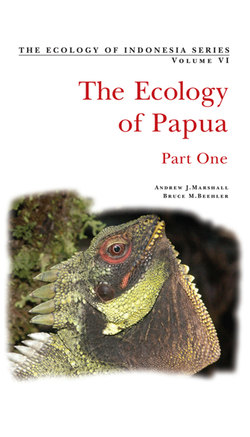Читать книгу Ecology of Indonesian Papua Part One - Andrew J. Marshall - Страница 12
На сайте Литреса книга снята с продажи.
ОглавлениеForeword
EDWARD O. WILSON
PAPUA HAS LASTED into the twenty-first century as largely a blank space on the map, and we will do well to treasure it for that. Here for the last time in history, as human modernity closes irreversibly over the planet, we may take comfort that there still exists a land "beyond the frontier" such as Papua. We can still feel the aura that drew explorers of past centuries and provided an exit from their otherwise controlled and predictable lives. We can share what the great adventurer Richard Burton expressed in 1856: "Of the gladdest moments in human life, me-thinks, is a departure upon a distant journey into unknown lands." There, he rejoiced, "Afresh dawns the morn of life." And exploring Papua is no trek through hourless days across some vast desert. Rather, it offers entry, as the present volume makes clear, into an intact world of ancient cultures and wondrous life forms.
I have never visited Papua, but I enjoyed all the emotions just expressed while traveling in 1955 through a large part of Papua New Guinea, to the east. I was a young entomologist then, myrmecologist to be exact, and the first specialist on ants to visit the great island. With no predecessors except a few casual collectors of these little insects, I had only a vague idea of what to expect. Everywhere I searched I found new species. I studied previously unrecorded social behaviors, and I frantically scribbled notes on all I saw (there were no pocket-sized tape recorders in those days). Humble though ants may be, and as modest my own efforts, I considered myself a true explorer in unknown terrain. With no previous myrmecologist’s footprints to give me pause, I felt somehow I belonged to this land and had some responsibility for it. I like to believe that others privileged to pioneer in their respective specialties have felt the same way.
New Guinea, including Papua, is a challenge and a paradise for anthropologists and biogeographers. Its complex mountainous terrain has divided its human populations, during 40,000 or more years of occupation, into the most diverse array of cultures and languages of any comparable area in the world. Long before people arrived, the island’s equatorial location and geology combined to make it one of the several most biologically rich regions of Earth, both on the land and in the coral reefs of its marine coasts.
For millions of years new species have flowed into it from nearby tropical Asia to the west and from Australia to the south. Many of the immigrants succeeded in penetrating the mountainous interior; and there, like Homo sapiens among the more recent immigrants, they tended to spread out and diversify. Some of the productions of the indigenous fauna and flora were trapped by their adaptation to strictly local conditions. Others, ecologically more flexible, expanded their ranges to penetrate northern Australia, as well as islands and archipelagoes in the remainder of Melanesia.
The island’s large size, its constant climate favorable to vegetative growth, rugged topography, and nearness to the continental source areas of Asia and Australia have made New Guinea a hypergenerator of human and biological diversity.
New Guinea, including the remote marches of Papua, will not remain secluded for long, however. Soon its indigenous people, together with a growing immigrant population, will take over as the explorers and developers. Those of us on the outside able to conduct the early studies of the island nonetheless have a responsibility to make the transition in future generations as secure and beneficent as possible. We will serve them and the whole world to great benefit if we include in this program of assistance the effort to conserve as much as possible of the great island’s extraordinary cultural and natural heritage.
